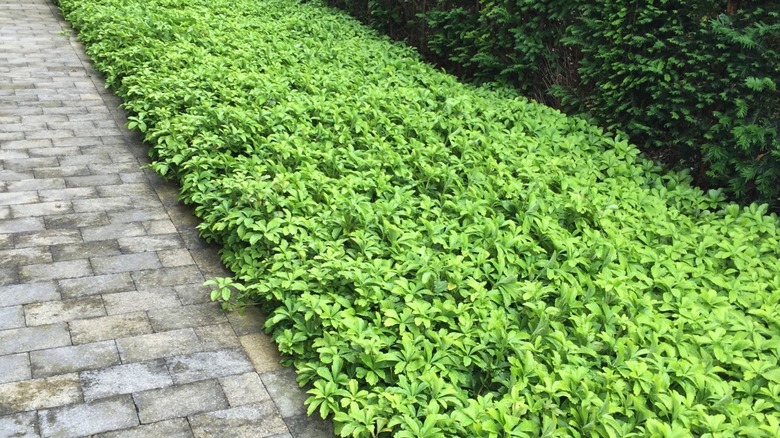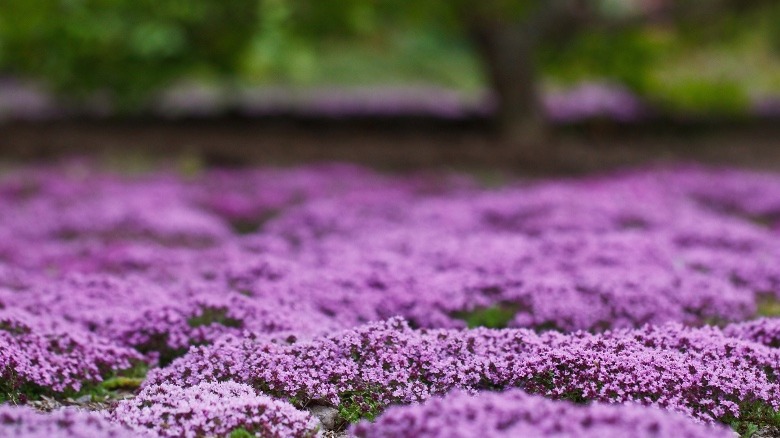Better Ground Cover Grass Alternatives To Grow Instead Of Pachysandra
Choosing the perfect ground cover can take your landscape from average to stunning while providing essential functions like erosion control. While pachysandra (Pachysandra terminalis) has long been favored by gardeners to use as a ground cover for shady spots, it can sometimes be invasive. There are a few things you should know before planting pachysandra as a ground cover: It can spread too quickly, taking over areas where it wasn't intended and making it hard for other plants to grow nearby. Additionally, pachysandra is susceptible to blight, which can cause the death of the plant. Pachysandra is a ground cover to avoid, so if you want something distinct in your landscape, other alternatives can perform better, are prettier, or are just different than what all the neighbors have growing in their yards. As you choose alternatives, consider how difficult each is to plant in your location, the individual care requirements, and the best way to use each one.
There are equally wonderful pachysandra alternatives like creeping thyme (Thymus serpyllum), bearberry (Arctostaphylos uva-ursi), ajuga or bugleweed (Ajuga reptans), vinca minor (Vinca minor), and sedum (Sedum spp.). Each of these plants has its benefits and is flexible in meeting the diverse needs of ground covers. Each has different planting and maintenance requirements, so be sure to choose the one you're most comfortable introducing to your garden.
Ground cover alternatives to pachysandra
Creeping thyme (Thymus serpyllum) is a fragrant, low-growing perennial that produces small purple flowers. It forms a dense mat that can tolerate foot traffic. It is excellent for pathways and sunny areas. Once established, it needs well-drained soil, full sun, minimal fertilizing, and is drought-tolerant. Bearberry (Arctostaphylos uva-ursi) is an evergreen shrub with thick leaves and red berries. It helps tremendously with erosion control and does well in sandy or rocky soils. It needs full sun to partial shade, and regular watering.
Ajuga or bugleweed (Ajuga reptans) is a fast-growing ground cover known for its vibrant foliage and blue flower spikes in spring. It's perfect for shaded areas where grass won't grow. This plant needs moist, well-drained soil, partial shade to full sun, feeding with a balanced fertilizer in early spring, and watering regularly. Vinca minor (Vinca minor), commonly known as periwinkle, is a glossy-leaved evergreen ground cover with charming blue or purple flowers. It is vigorous and spreads rapidly, adapting to varied conditions. It thrives in well-drained soil, full sun to full shade, light fertilizer in the spring, and regular watering. Sedum (Sedum spp.) is made up of many species that are drought-tolerant succulents with fleshy leaves and flowers that may be brightly colorful. They need well-drained sandy or rocky soil, full sun to partial shade, infrequent fertilizing, and watered sparingly.
All of the above ground covers are a much better choice than pachysandra. Plus, when you choose a native ground cover that won't take over your yard, you'll end up with an enjoyable, manageable garden.

